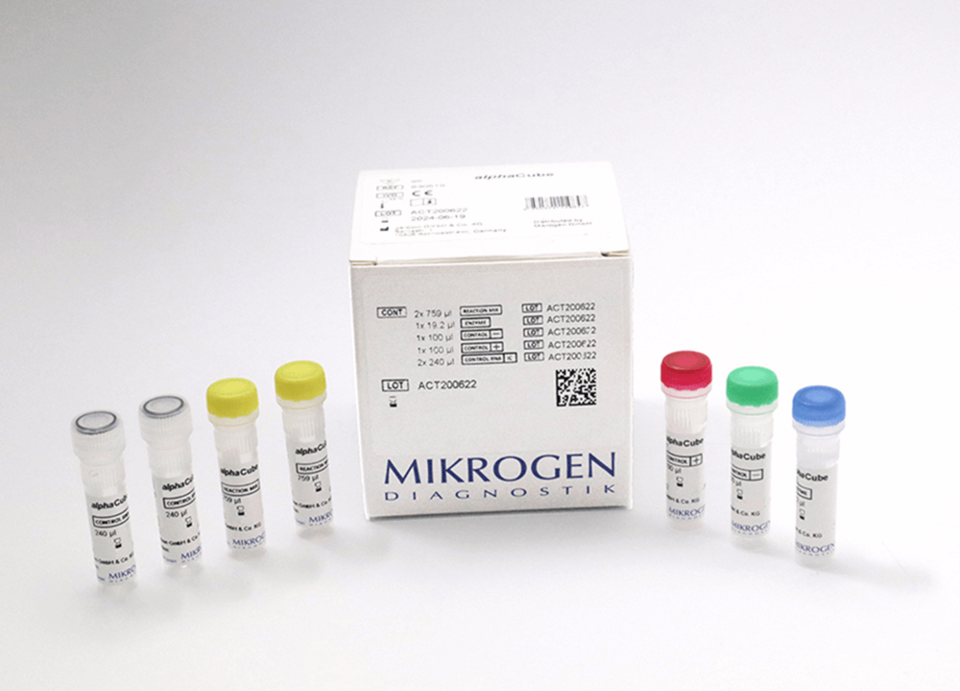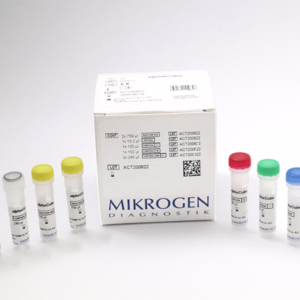| Weight | 1 lbs |
|---|---|
| Dimensions | 9 × 5 × 2 in |
| target | gastroplexVirus PLUS 2 |
| species reactivity | For the detection of Norovirus Genogroup I, Norovirus Genogroup II, Adenovirus, Rotavirus, Astrovirus, and Sapovirus. |
| applications | RT PCR |
| assay type | direct & qualitative |
| available sizes | 96 tests |
gastroplexVirus PLUS 2 RT-PCR test Mikrogen 830503
$487.00
Summary
- Mikrogen diagnostik RT PCR kit for research use (RUO)
- Direct Adenovirus, Norovirus, Rotavirus, Astrovirus, Sapovirus detection
- High sensitivity and specificity
- Internal control for monitoring nucleic acid extraction
(RNA/DNA) and real-time PCR inhibition in each reaction - Compatible with most common real-time PCR cyclers & RNA/DNA extraction methods
- 96 tests
gastroplexVirus PLUS 2 RT-PCR test Mikrogen 830503
| kit | |||||||||||||||
|---|---|---|---|---|---|---|---|---|---|---|---|---|---|---|---|
| Assay type RT PCR | |||||||||||||||
| Research area Infectious Disease | |||||||||||||||
| Sample type whole blood, serum, plasma, urine, tissue, stool, etc., food and environmental samples or from the carrier material | |||||||||||||||
Notes
| |||||||||||||||
Components
| |||||||||||||||
| Storage Store at -20°C. | |||||||||||||||
| Additional information Highly sensitive and specific direct detection of pathogens that can cause tick-borne infections
Applicable to human starting material as well as RNA/DNA from the tick |
| target relevance |
|---|
| Organism Adenovirus |
| Protein names Adenovirus |
| Structure and strains Adenoviruses (members of the family Adenoviridae) are medium-sized (90-100 nm), nonenveloped (without an outer lipid bilayer) viruses with an icosahedral nucleocapsid containing a double-stranded DNA genome. Their name derives from their initial isolation from human adenoids in 1953. They have a broad range of vertebrate hosts; in humans, more than 50 distinct adenoviral serotypes have been found to cause a wide range of illnesses, from mild respiratory infections in young children (known as the common cold) to life-threatening multi-organ disease in people with a weakened immune system. |
| Detection and diagnosis Direct and indirect detection methods are used for the diagnosis of Adenovirus infectons. Due to the variety of clinical symptoms, which may be caused by Adenoviruses, serological investigations have become important for the differential diagnosis of respiratory tract infections. |
Data
| No results found |
Publications
Warning: Cannot modify header information - headers already sent by (output started at /www/benchmarkantibodiescom_769/public/wp-includes/script-loader.php:3015) in /www/benchmarkantibodiescom_769/public/wp-content/plugins/shortcode-manager/shortcode-manager.php(453) : eval()'d code on line 3
Publications
| pmid | title | authors | citation |
|---|---|---|---|
| We haven't added any publications to our database yet. | |||
Protocols
| relevant to this product |
|---|
| 830503 protocol |
Documents
| # | ||
|---|---|---|
| Please enter your product and batch number here to retrieve product datasheet, SDS, and QC information. | ||
Only logged in customers who have purchased this product may leave a review.


Reviews
There are no reviews yet.